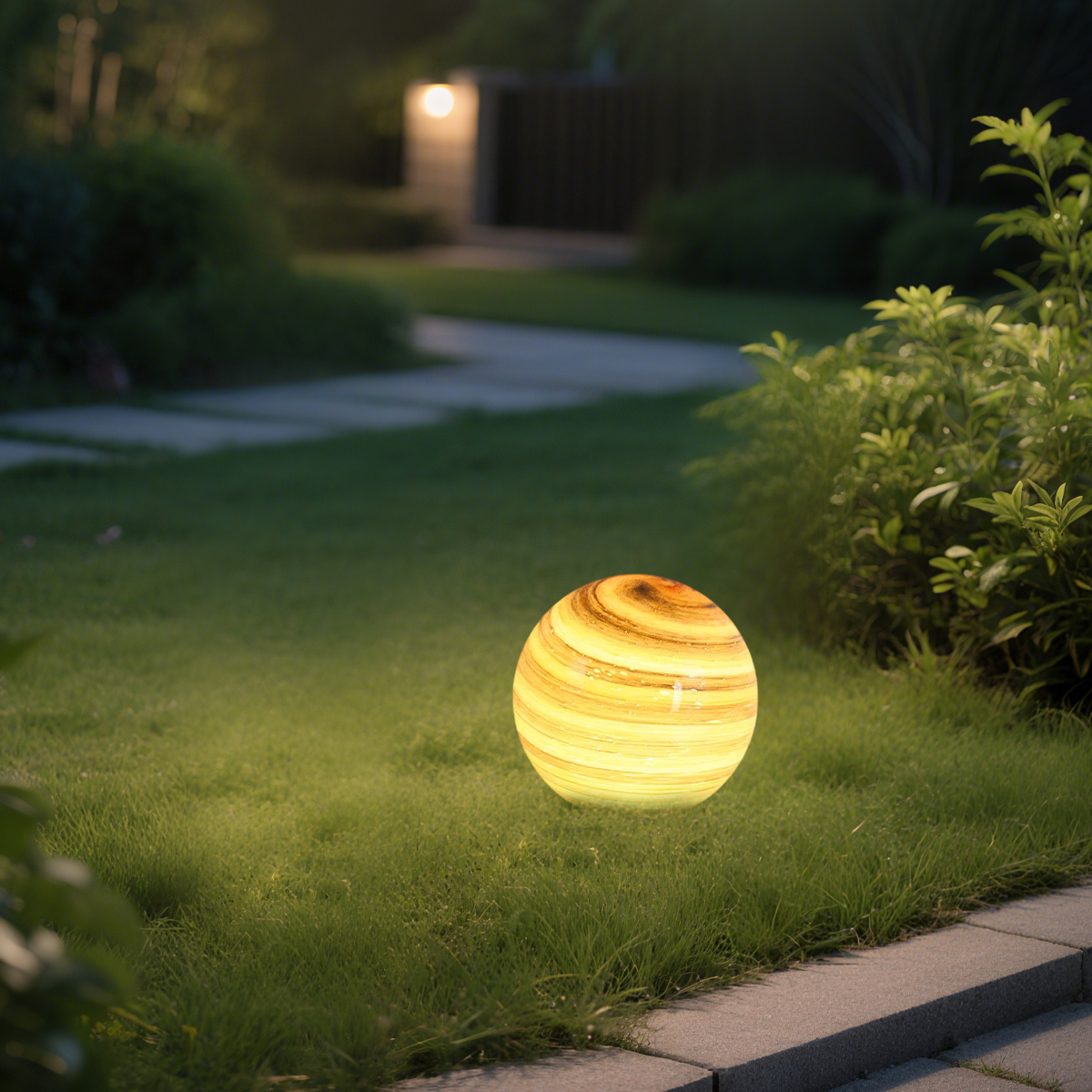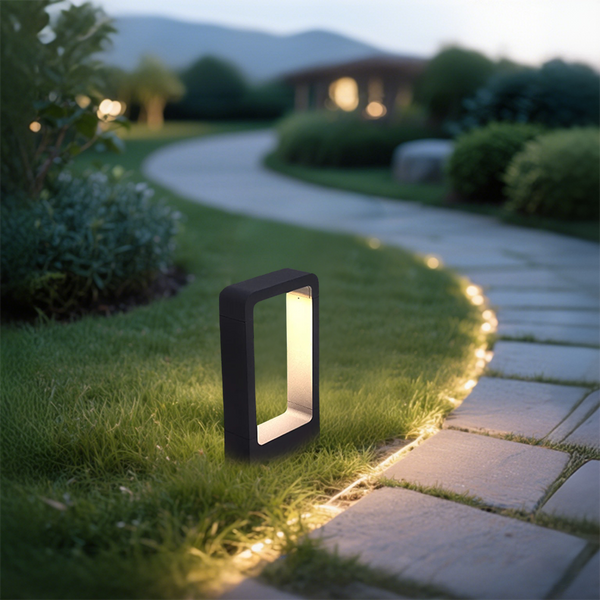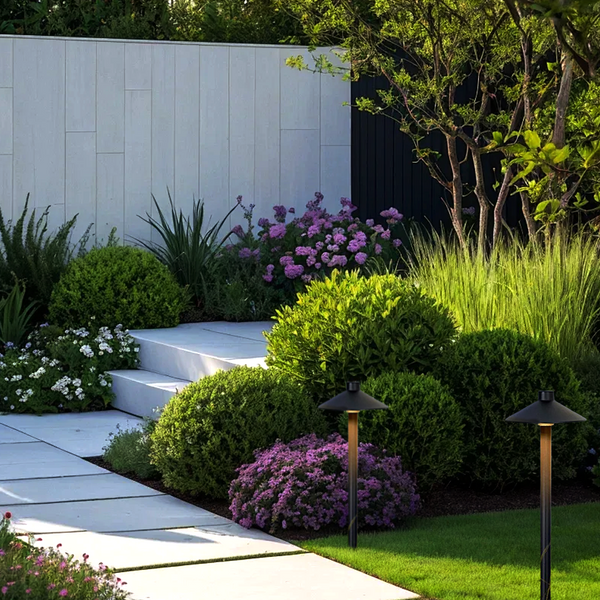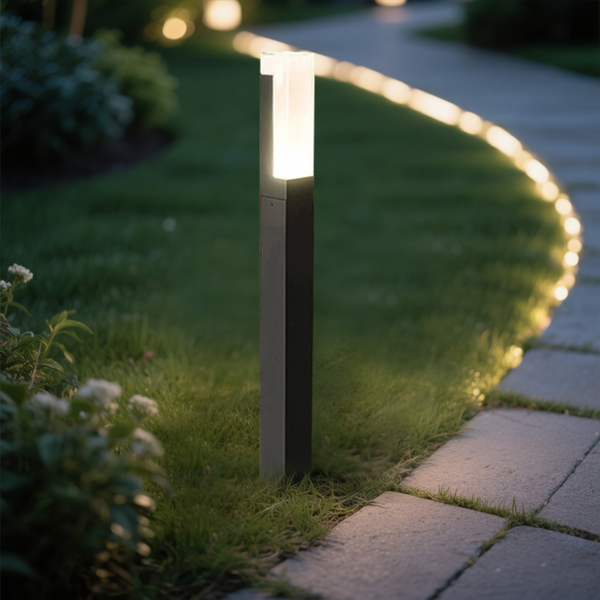Transform your outdoor spaces with stylish and functional outdoor path lights. This comprehensive outdoor path lights guide 2025 explores a variety of lighting options, from solar to smart solutions, emphasizing safety, aesthetic appeal, and property value. Discover essential tips on placement and features to enhance your landscape!
When it comes to outdoor spaces, lighting does more than just brighten the way—it creates a safe, welcoming, and visually appealing environment. Outdoor path lights are one of the most practical and stylish solutions for illuminating walkways, gardens, and driveways. Whether you’re guiding guests to your front door, highlighting a beautifully landscaped yard, or simply making sure your family can walk safely at night, pathway lights play a vital role.In recent years, outdoor lighting has evolved far beyond basic fixtures. Homeowners can now choose from solar-powered, low-voltage, LED, and even smart path lights that combine efficiency, durability, and design flexibility. From modern black bollard lights to discreet in-ground fixtures, the options available in 2025 make it easier than ever to match your home’s style while improving functionality.This guide will walk you through everything you need to know—from types of path lights and key buying considerations to placement tips and design ideas—so you can confidently choose the right lighting solution for your outdoor space.
Why Outdoor Path Lights Matter
Adding outdoor path lights is not just about style—it’s about creating a safer, more enjoyable environment around your home. Well-placed pathway lighting enhances both practicality and aesthetics, making it one of the most important elements of landscape design.
1. Safety & Security
Unlit pathways can be hazardous at night, especially along steps, uneven ground, or garden trails. Path lights provide clear visibility, helping family and guests move around without the risk of tripping or falling. Beyond safety, well-lit walkways also act as a natural deterrent against unwanted intruders, adding an extra layer of home security.

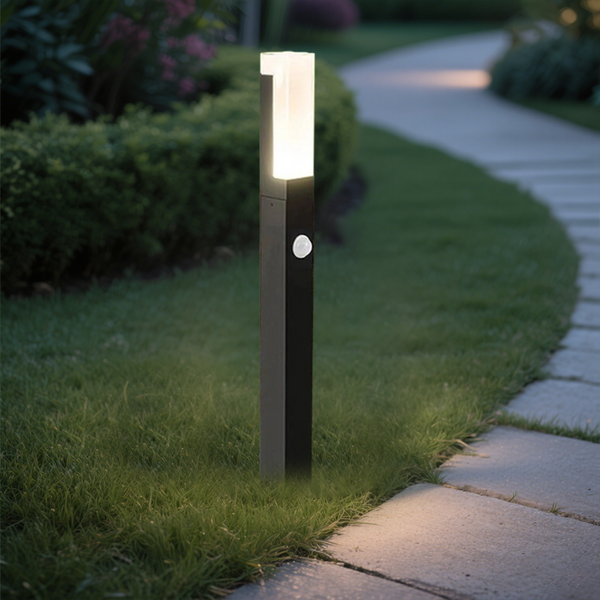
2. Aesthetic Appeal
Outdoor path lights do more than illuminate—they create atmosphere. Warm, soft lighting along a walkway or garden border makes the space feel inviting and elegant. Whether you choose modern bollard lights for a sleek look or subtle in-ground fixtures for a minimalist design, the right pathway lighting highlights your landscaping and architecture beautifully.
3. Property Value
Investing in professional-looking path lighting increases curb appeal and can even boost property value. A well-lit walkway suggests a cared-for home, which is particularly attractive to buyers. For homeowners who enjoy outdoor gatherings, thoughtfully placed pathway lights also make patios, gardens, and driveways more functional and welcoming after sunset.
Types of Outdoor Path Lights
Outdoor path lights come in a wide range of styles and technologies, each designed to meet different needs. Understanding the options helps you choose the perfect balance of style, brightness, and durability for your outdoor space.
1. Solar Path Lights
Best for: DIY homeowners, eco-friendly lighting
Why choose solar? Solar path lights are powered by the sun, meaning no wiring, no electricity costs, and easy installation. They charge during the day and automatically turn on at dusk, making them a low-maintenance and budget-friendly option.
Perfect for: Garden walkways, flower beds, or temporary setups.
2. Low Voltage Path Lights (12V)
Best for: Permanent, reliable outdoor lighting
These lights are wired into a low-voltage system using a transformer, providing consistent brightness and performance. Unlike solar lights, they are not dependent on sunlight, making them more reliable in shaded areas or regions with cloudy weather.
Perfect for: Driveways, front yard pathways, and large gardens.
3. LED Path Lights
Best for: Energy efficiency and long lifespan
LEDs consume very little power while delivering bright, focused illumination. They also produce minimal heat and can last up to 50,000 hours. Many LED fixtures are available in warm white (3000K) or cool white (4000K) to match different outdoor atmospheres.
Perfect for: Homeowners seeking low-maintenance, cost-effective lighting.
4. Bollard Lights
Best for: Modern and commercial landscapes
Bollard lights are taller, post-like fixtures that provide both functional lighting and strong visual impact. Available in finishes such as black, bronze, or stainless steel, they fit beautifully into modern architectural designs.
Perfect for: Driveways, wide walkways, and contemporary gardens.
5. In-ground / Recessed Path Lights
Best for: Minimalist and discreet lighting
These lights are installed flush with the ground, offering a clean, modern look while minimizing trip hazards. They provide subtle illumination without blocking the view of your landscaping.
Perfect for: Modern homes, pool areas, or sleek driveways.
6. Motion Sensor & Smart Path Lights
Best for: Convenience and energy savings
Motion-activated path lights only turn on when movement is detected, enhancing security and reducing energy waste. Smart path lights, on the other hand, connect to WiFi or apps, allowing you to control brightness, schedules, and even colors from your smartphone.
Perfect for: Tech-savvy homeowners who value both security and customization.
Key Features to Consider Before Buying
Choosing the right outdoor path lights involves more than picking a style you like. To ensure your pathways are safe, attractive, and durable, consider the following key features before making a purchase.
1. Brightness & Color Temperature
- Brightness: Measured in lumens, brightness determines how well your path is lit. For walkways and garden paths, 100–300 lumens per fixture is usually sufficient.
- Color Temperature: Warm white (around 3000K) creates a cozy, inviting glow, while neutral white (4000K) provides brighter, more modern illumination. Choosing the right temperature helps balance aesthetic appeal and visibility.
2. Waterproof Rating
- Look for fixtures with an IP65 or higher rating to ensure they can withstand rain, snow, and outdoor elements. Waterproofing is especially important for solar and low-voltage path lights exposed to direct weather.
3. Materials & Finish
- Common materials include stainless steel, aluminum, bronze, and black powder-coated finishes.
- Stainless steel and aluminum resist rust, making them ideal for coastal or humid areas.
- Bronze and black finishes provide a timeless, elegant look for modern gardens.
4. Power Source
- Solar: Easy to install, energy-efficient, but dependent on sunlight.
- Low Voltage (12V): Reliable, suitable for larger setups, requires wiring.
- Rechargeable: Offers flexibility, can be charged via solar or USB.
- Your choice affects installation complexity, brightness, and long-term maintenance.
5. Durability & Anti-Rust Features
- Outdoor lights are exposed to weather year-round. Choosing fixtures with rust-resistant coatings, high-quality metals, and durable plastics ensures they last longer with minimal upkeep.
6. Design Style
- Path lights should complement your home and landscape style. Options range from modern minimalist bollards to classic decorative garden lights. Consider how the design works with your walkways, driveways, and overall aesthetic.
Outdoor Path Light Placement & Installation Guide
Proper placement and installation of outdoor path lights can make a significant difference in both safety and visual appeal. Here’s a comprehensive guide to help you light up your walkways, gardens, and driveways effectively.
1. How to Space Pathway Lights
- Typical spacing: For low-voltage or LED path lights, a spacing of 6–10 feet (1.8–3 meters) is common.
- Factors to consider: Wider paths or uneven terrain may require closer spacing to avoid dark spots.
- Tip: Solar path lights often need closer placement if they provide lower brightness.
2. Best Height for Path Lights
- Standard height: Most path lights range from 12–24 inches (30–60 cm) above ground.
- Why it matters: Proper height ensures the light spreads evenly on the path while minimizing glare. Taller bollard lights are suitable for driveways or larger spaces.
3. Placement Tips for Different Areas
- Driveways: Line both sides of the driveway for symmetry and safety. Consider taller bollard lights for better coverage.
- Garden Paths: Highlight curves, flower beds, and focal points. Use a mix of in-ground and decorative lights for variety.
- Walkways to Entrances: Guide visitors safely with lights on either side, keeping a consistent style and brightness.
4. Wiring Low Voltage Path Lights
- Plan the layout before installation and calculate the total wattage to select the appropriate transformer.
- Bury cables 6–12 inches underground or use weatherproof conduit for safety.
- Connect all fixtures to the transformer following the manufacturer’s instructions, ensuring proper polarity.
5. Solar Path Lights Positioning
- Place solar lights in areas that receive 6–8 hours of direct sunlight per day.
- Avoid shadows from trees, fences, or walls that can reduce charging efficiency.
- Clean solar panels regularly to maintain maximum brightness at night.
6. Tips for Uneven Terrain
- Adjustable stakes or mounting brackets allow you to align the light beam correctly, even on slopes or uneven surfaces.
- In-ground or recessed fixtures are particularly effective for hills or steps.
Best Outdoor Path Lights Ideas for 2025
2025 brings a mix of modern, energy-efficient, and stylish outdoor path lighting options. Here are some of the most popular ideas to inspire your own walkway, driveway, or garden project.
Modern Black Bollard Lights for Minimalist Homes
- Sleek, black bollard lights complement contemporary architecture and minimalist gardens.
- Ideal for driveways, wide walkways, or entrances where a clean, bold look is desired.
- Many modern bollard lights are LED-powered and IP65 waterproof, ensuring long-lasting performance.
Rust-Resistant Path Lights for Coastal Areas
- Coastal homes face salt, humidity, and strong winds. Choose stainless steel or powder-coated aluminum path lights for maximum durability.
- Solar or low-voltage options with corrosion-resistant finishes keep your pathways safe and stylish year-round.
Warm White 3000K Path Lights for Cozy Gardens
- Warm white (3000K) LED lights create a soft, inviting atmosphere along garden paths.
- Perfect for backyard entertaining, flower beds, or evening strolls.
- Pair with subtle in-ground fixtures to maintain a natural, elegant glow.
Smart WiFi Path Lights with App Control
- Tech-savvy homeowners can enjoy smart outdoor path lights that connect to WiFi or mobile apps.
- Control brightness, schedules, and even color from your smartphone.
- Motion sensors and timers enhance energy efficiency and security simultaneously.
Budget-Friendly Solar Path Lights Under $50
- For homeowners looking for an affordable yet stylish option, solar pathway lights offer easy installation and low maintenance.
- Ideal for garden paths, short walkways, or temporary setups.
- Modern designs now include adjustable stakes, decorative finishes, and replaceable batteries.
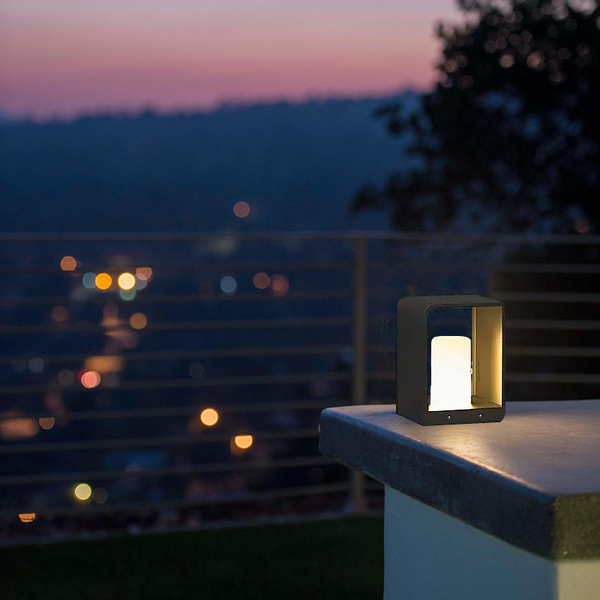
Modern Solar Pathway Light – IP65 Waterproof Candle-Style
Buy NowConclusion
Outdoor path lights are a simple yet powerful way to improve safety, aesthetics, and property value. From solar-powered garden lights to sleek bollards and smart WiFi fixtures, the options available in 2025 make it easy to find a solution that fits your home’s style and practical needs.By considering factors like brightness, color temperature, waterproof rating, and material durability, you can create a walkway or driveway that is both functional and visually stunning. Thoughtful placement, proper spacing, and regular maintenance ensure your pathways remain welcoming and safe throughout the year.Illuminate your outdoor spaces with confidence, and enjoy the beauty and safety that well-designed outdoor path lights bring to your home.
FAQ
Q1: What is the best spacing for outdoor path lights?
Lightslux: Typically, 6–10 feet (1.8–3 meters) apart for low-voltage or LED lights, depending on brightness and path width.
Q2: How tall should pathway lights be?
Lightslux: Standard heights range from 12–24 inches (30–60 cm). Bollards for driveways may be taller for wider coverage.
Q3: Are solar path lights bright enough for walkways?
Lightslux: Yes, modern solar LED lights provide sufficient brightness for standard paths, especially in well-exposed areas.
Q4: Low voltage vs solar path lights – which is better?
Lightslux: Low voltage is more reliable and consistent; solar is easy to install and energy-efficient. Choose based on location, budget, and maintenance preference.
Q5: Can outdoor path lights withstand heavy rain or snow?
Lightslux: Look for IP65 or higher-rated fixtures. Materials like stainless steel and powder-coated aluminum improve durability in harsh weather.





